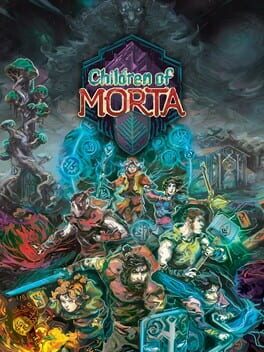I’m always a little bit concerned about my evaluations on games being informed first and foremost by kinesthetic ‘propaganda’, or rather that games designers catch me with a lovely aroma by fronting their dishes with the chemically enriched, sugary sweets of mechanics that, if nothing else, at swallows (or twitches) first and/or fondly remembered just feel good in the hands for myriad reasons departed from the efficacy or placement of those mechanics. The argument that Errant Signal makes when talking about Rage 2 resonates with me any time I boot up a game that requires a fast, kinesthetically engrossed type of play; there is a tendency, I think, in a lot of us playing games, for reasons due to the marketing, history, and time/life affordances of the medium, to think of these little programs as living disembodied in our fingers with rent paid to mind-body dualism first as pieces of art and cultural politic second, if at all. Trying to alert myself to what feels good in a game, or rather, what mechanism is approbating pleasure in the ideals of the game’s interaction set for me, often reveals a frightening, or possibly charming if you strive for reduction in design, miniaturization of the program's feigned culpability in the teamwork affected by its user and itself: with regards to the situation of play, this façade can be even smally erected with mere toggling of the just right physics shoving blocks into launch in a blank Unity model. That’s a bit foul of a reduction to bring an art form to, but in the same way euphony without substance can be intoned in poetry (and for some schools of poetry, is the most desirable and earnest form of substantiating the style an art; likewise, for some game critics and creators, playfeel is the foremost elevator of the form), much of what initially implicates our understanding of games can be moderated by the disassembling of the inhabitation we must extend to the program being worked through. In Children of Morta, the umbrage is that of a model forest casting long by bright incandescents lent glittering gewgaws, or rather it is able to be walked through if you shuffle amongst the shadow leaves but don’t expect the scent of pine, the comfort of lumber, the solitude of nature, or the neighbouring of wilds.
It’s less to say that in Children of Morta that the facsimile of thematic and iconographic decoration is superceded by play but more that CoM is another example of big name indies that try to elevate the ideals of storytelling without recusing their play of the power-fantastical standard of the AAA and ‘turn-your-brain-off’ entertainment that makes the games world more populous with hobbyists and less of those engaging preeminently as critical or artistic enshriners. There is no harm in that ideal, and certainly is necessary if the medium is to continue perpetuation, not even to mention that the ease of play in kinaesthetic forward games is just as valid as euphonic first poetry and erotic first ballet and melodic first music, but as I said first above, any game that is kinaesthetic foremost in its engagement while still retaining pretensions of thematic depth have to walk a much more careful line than those games which treat its mechanical interaction as extensions of the thematic core.
And, unfair as it is, if you’re trying to commute your tone through voice-over and text, it should probably be well-written and engaging.
It’s less to say that in Children of Morta that the facsimile of thematic and iconographic decoration is superceded by play but more that CoM is another example of big name indies that try to elevate the ideals of storytelling without recusing their play of the power-fantastical standard of the AAA and ‘turn-your-brain-off’ entertainment that makes the games world more populous with hobbyists and less of those engaging preeminently as critical or artistic enshriners. There is no harm in that ideal, and certainly is necessary if the medium is to continue perpetuation, not even to mention that the ease of play in kinaesthetic forward games is just as valid as euphonic first poetry and erotic first ballet and melodic first music, but as I said first above, any game that is kinaesthetic foremost in its engagement while still retaining pretensions of thematic depth have to walk a much more careful line than those games which treat its mechanical interaction as extensions of the thematic core.
And, unfair as it is, if you’re trying to commute your tone through voice-over and text, it should probably be well-written and engaging.
